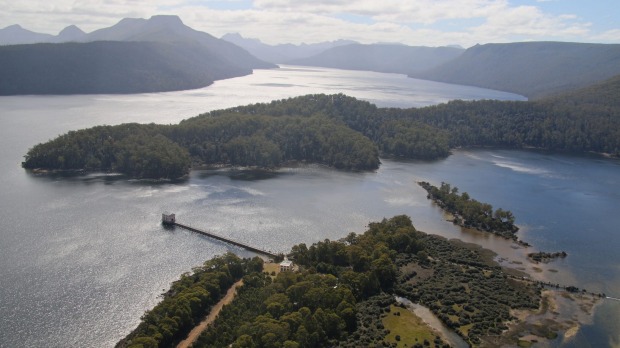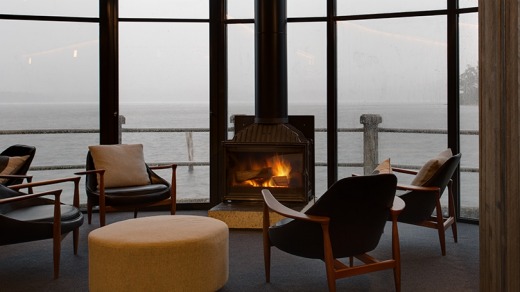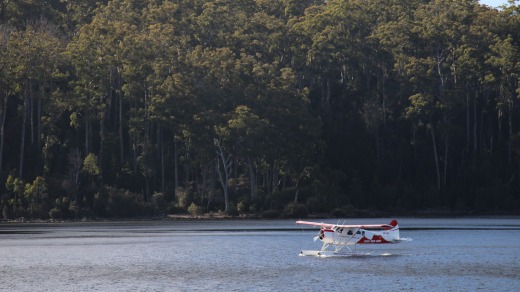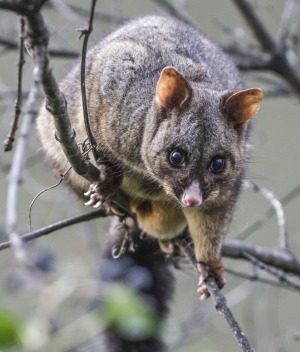
There was bound to be opposition. The friendly Wilderness Society volunteers we meet at Hobart's Salamanca Market don't like the idea that a few privileged people can fly into remote Tasmanian lakes in a seaplane and "spoil things for everybody else".
It was also inevitable that there would be wariness about Simon Currant's plan to convert an abandoned hydro-electric pumphouse into comfortable accommodation in the World Heritage-listed Cradle Mountain-Lake St Clair National Park.
My partner and I love our wilderness (disclosure: we're also Wilderness Society sponsors) though we're no longer able to undertake the tough treks we used to enjoy enduring, carrying rations, fuel and tents. So we feel only slightly guilty about taking the seaplane ride offered by Tasmanian Air Adventures to stay at Pumphouse Point.

It's a spectacular 45-minute flight up the Derwent Valley, with views of the city and the Tasman Bridge giving way to rolling farmland past the town of New Norfolk, then the dams of Tasmania's hydro scheme, with superb vistas as we approach the national park and finally a touchdown in lovely Lake St Clair itself.
As far as we can tell, this is the only seaplane landing for two days and we hear no muttered complaints about noise pollution from those who arrived by road.
"There's still an awful lot of wilderness out there," says Pumphouse Point proprietor Currant. "Isn't it selfish and elitist to lock up these areas, keeping them only accessible to people able to carry 50-kilogram packs?"

Everyone understands that conservation of wilderness is a key priority, none more so than those who run businesses based on Tasmania's reputation as a wild destination. It's in everybody's interest to look after the pristine parts of the state that bring people here in the first place.
The Pumphouse Point development has been carefully designed to foster respect for the environment. Built in the 1940s, it consists of two basic blockhouses connected by 150 metres of concrete jetty sticking out into lovely Lake St Clair. I'm sure some regarded it as a blot on the landscape, particularly since it was seldom if ever required to do any pumping.
Its recent makeover was completed in January 2015. From the industrial chic of our eyrie in the lake, we're able to watch through enormous bay windows as the weather sweeps in – squalls, and yes, even snow – protected by the double glazing and warmed by the wood stove in the lounge room. We love it.

The fixed menu dinner in the Lakehouse is casual and communal, a plus in our book. We're soon chatting to our fellow guests over bottles of fine Tasmanian wine.
When the blue breaks through above next day, we venture out to play. There are mountain bikes, rowing boats and fishing tackle at our disposal, but we take the track most travelled – the walking option.
At the nearby Lake St Clair Lodge and Visitors Centre we can choose from a gruelling all-day trek up Mount Rufus or gentler lakeside strolls. Walkers are likely to see many birds, probably pademelons and possums and possibly even a platypus.
We loop a few gentle kilometres out to the falls of Watersmeet, around to Platypus Bay (nope, no luck spotting them this time) and back along the Larmairremener Tabelti Aboriginal cultural walk. The tracks are wide and well maintained, which for hardcore hikers may detract from the wilderness experience. But the boardwalks protect swampy sections from the many pairs of feet that would otherwise slosh through them, with consequent damage to the undergrowth.
The balance between comfort and conservation seems about right. Despite the popularity of Lake St Clair, it doesn't feel crowded. We'd hate to see it developed so that seaplanes or helicopters constantly clattered overhead, while jet-skis zoomed around the lake, but there seems little chance of that happening. Quiet appreciation of natural beauty is the thing to do here. Long may it remain so.
As the rain returns, some of the 8000 people who hike the famous Overland Track each year gratefully drop their backpacks and pile into the lodge to binge on pizzas before pitching soggy tents in the campground. A few may just treat themselves to a night of luxury at Pumphouse Point.
As Currant puts it, "The more people who see these places, the more people will appreciate them and the more voters will lobby their politicians to preserve them."
We certainly lend our support to that cause. Tasmania's wild heritage deserves all the protection it can get.
discovertasmania.com.au
Lake St Clair is about a 2½ hour drive from Hobart. For quotes on Tasmanian Air Adventures seaplane trip, see tasmanianairadventures.com.au.
Pumphouse Point double rooms begin at $240 a night. See pumphousepoint.com.au.
Entry to the Lake St Clair National Park costs $12 each for a day or $24 a vehicle.